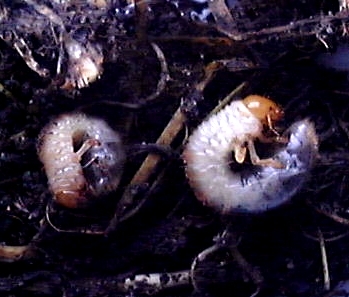Chafer Grub Spring and Autumn 100 sqm Offer
Original price was: £59.98.£56.98Current price is: £56.98.
Nemasys® Chafer Grub Killer is normally applied once a year in the autumn, but if you have discovered a severe infestation, then you can treat TWICE in the Spring and Autumn to get on top of the problem. Order our Chafer Killer Spring and Autumn 100 sqm Offer and we will send 2 x 100 sqm packs separately – the 1st pack will be sent ASAP (or select a dispatch date below) followed by another pack sent AUTOMATICALLY in the Autumn i.e. w/c 15th September (or email us alternative dates and we will organise it) and save £3.00 the normal combined price.
Special Offer – Help your lawn recover from a pest attack by applying Root Success Fertiliser – Add Root Success and save £1.50 off the combined price (saving applied at checkout).
N.B. Need a Coarse Rose, NemaCan Watering Can, EasyNem Applicator or Hose-end Feeder – Add one to your basket and save £1.00 off a Coarse Rose OR save £2.00 off a EasyNem Applicator , Hose-end Feeder or NemaCan when bought with your nematodes (savings applied at the checkout).
Full Description

Adult Beetles – The Garden Chafer Beetle emerges in May/June from the lawn to mate before laying eggs in the lawn from where it has just emerged. These eggs hatch to produced chafer grubs. The eggs are often laid in the same place each year so the problem gets progressively worse. The Chafer Grubs feed on grass roots from July until late Autumn before burrowing deep into the ground to pupate. They are a source of food for large birds-crows and woodpeckers as well as foxes and badgers. These may do more harm to your lawn by ripping it up to get at the grubs. The Chafer Grubs then lay dormant during the winter deep in the ground before moving to the surface the following spring to emerge as beetles in May / June and starting the process again.
Control chafer grubs naturally by applying Green Gardener Chafer Grub Killer containing millions of nematodes (Heterorhabditis bacteriophora) to the infected lawn as soon as the chafer grubs are discovered and the soil temp must be 12°C or apply in the autumn (Sept / Oct) as this is when the chafer grubs are the most susceptible to the nematodes. Chafer Grub Killer is effective at killing chafer grubs, but is harmless to children, wildlife and pets and the lawn may be used immediately after application. Apply as follows :-
- Apply Green Gardener Chafer Grub Killer in September/October – This is the ideal time to treat as the soil is warm PLUS the chafer grubs are newly hatched and are the most susceptible to the nematodes, so if you have had chafer grubs in the past or have discovered a infestation or your neighbours are infested and you want to keep them at bay, treat in September/October. Order for delivery in the Autumn.
- Apply Green Gardener Chafer Grub Killer when chafer grubs are discovered – Chafer Grub Killer is normally applied in September as this is when the chafer grubs are newly hatched and most susceptible to the nematodes, but if you have discover chafer grubs at any other time of year i.e. in the spring/summer then you can treat during the year (and the soil temp is 12°c), but you must treat in September as well. Available NOW.
How to apply? – Green Gardener Chafer Grub Killer is easy to use. Simply mix the harmless powder with water & apply to the lawn using a watering can fitted with a rose (we recommend the Rose no.14) or use the NemaCan Watering Can or use an EasyNem Applicator for larger areas. The nematodes should be applied to a moist lawn (we recommend pre – watering) on a dull day or in the evening. After application you MUST wash the nematodes into the lawn by watering heavily with a hose or a sprinkler. Once applied the nematodes will seek out the chafer grubs and on contact they enter the grub and start to destroy it. Over the next 3-5 weeks the nematodes feed and multiply inside the grubs, so that once the grub dies and decomposes, the nematodes inside are released back into the soil to hunt down more chafer grubs.
How is it sent? – Green Gardener Chafer Grub Killer is a perishable, living product, so it should be ordered when you are ready to apply. It must be used before the expiry date (which is marked on the inside of the pack and will be at least 2 weeks) and it must be stored in the fridge until it is needed. Once opened, the contents do not keep, so it must be used in one day – do NOT store the made up solution or powder. They are sent by 1st class post and 1 or 2 packs will go through your letterbox and should be popped in the fridge as soon as possible – they are fine on the doormat while you are at work.
N.B. Need a Coarse Rose, NemaCan Watering Can, EasyNem Applicator or Hose-end Feeder – Add one to your basket and save £1.00 off a Coarse Rose OR save £2.00 off a EasyNem Applicator , Hose-end Feeder or NemaCan when bought with your nematodes (savings applied at the checkout).










R J WILCOX (verified owner) –
I requested Chafer grub Nematodes in August and received them, on time, for the September treatment and applied them as per the enclosed instructions. I can confidently expect the (pre-paid) second application to be sent in April for Spring treatment.